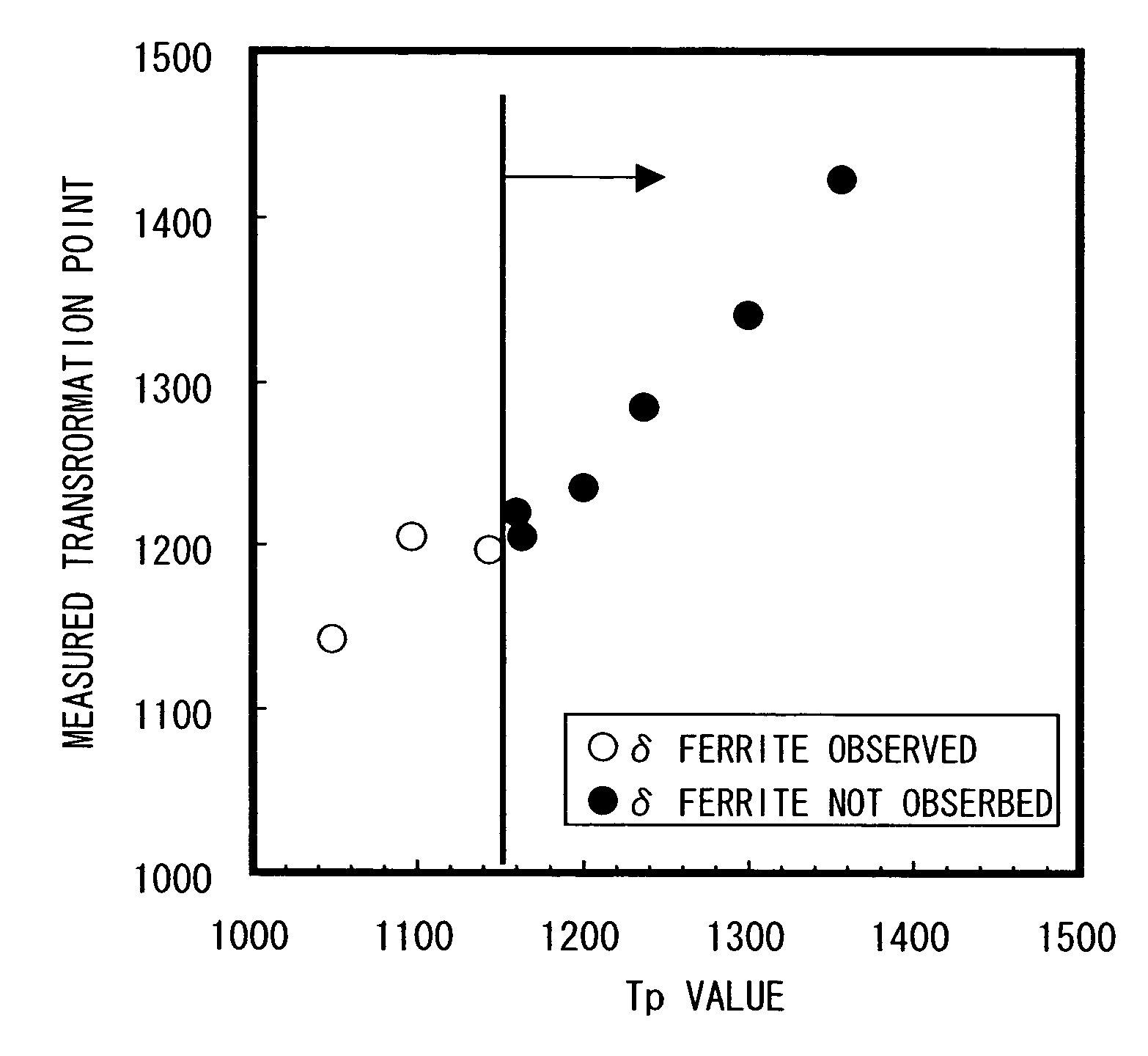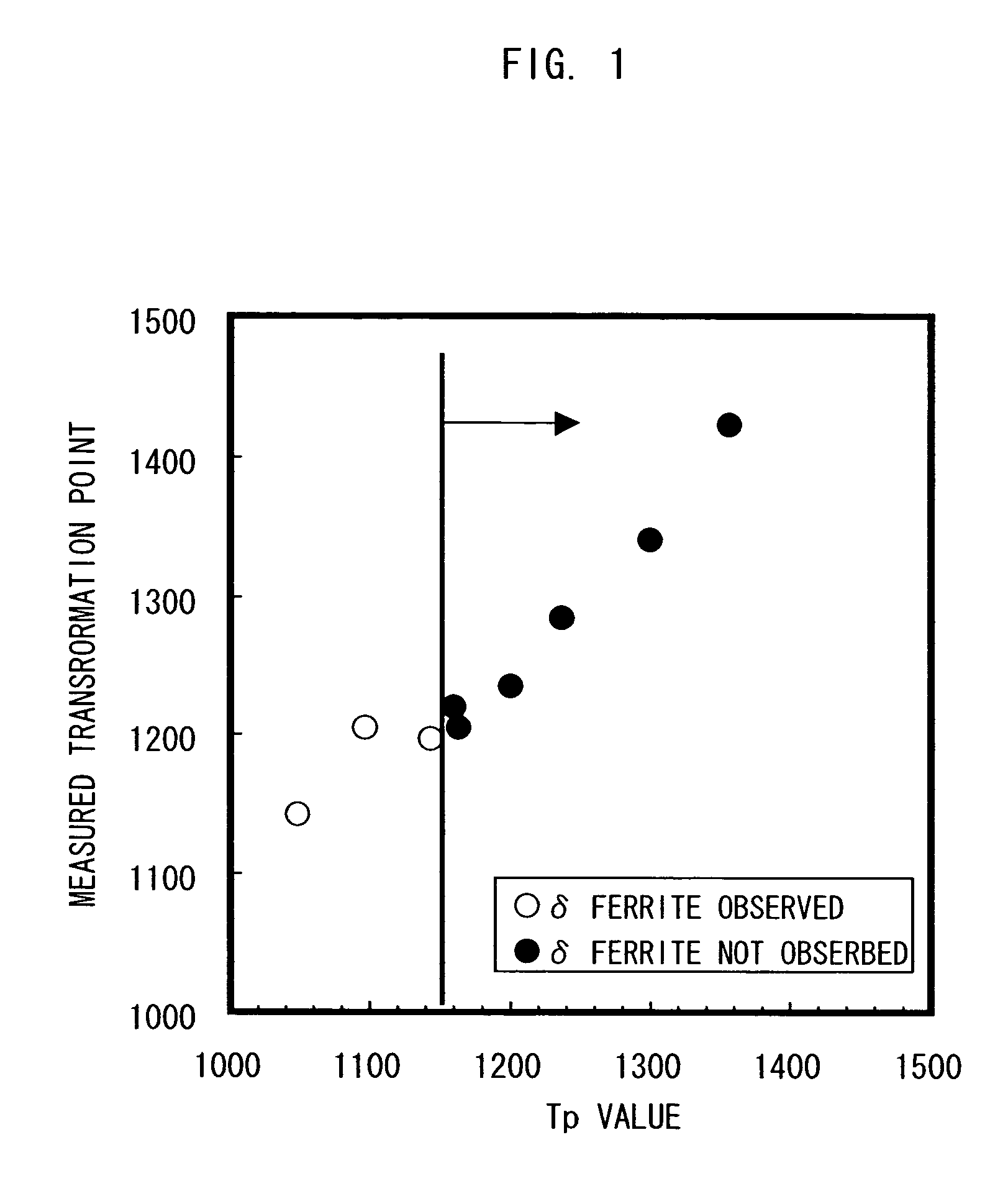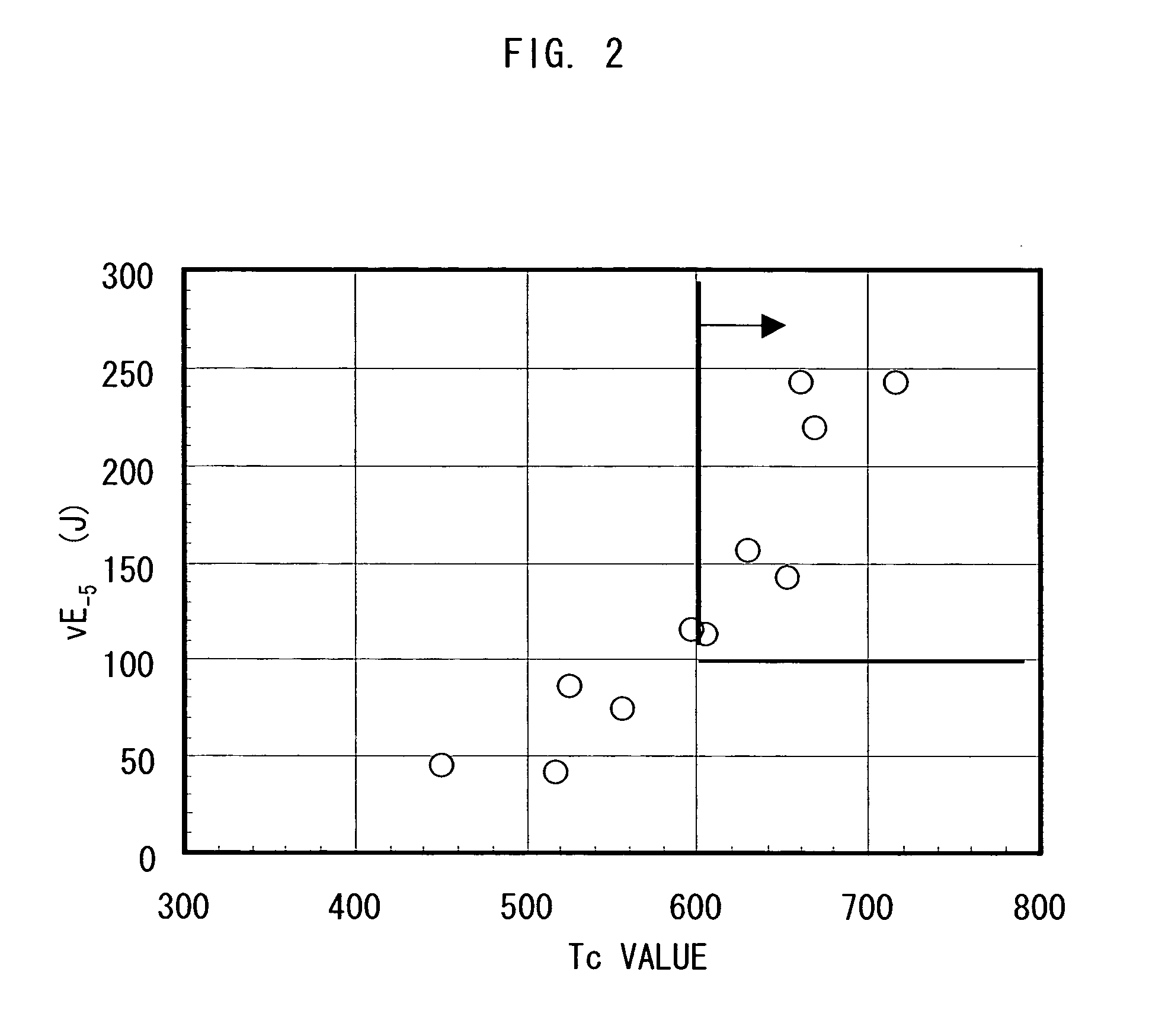Corrosion-Resistant Steel Excellent in Toughness of Base Metal and Weld Portion, and Method of Manufacturing the Same
a technology of corrosion-resistant steel and applied in the field of corrosion-resistant steel, can solve the problems of poor toughness, reduced toughness of base metal, and considerable deformation of toughness, and achieve excellent toughness and large corrosion resistance
- Summary
- Abstract
- Description
- Claims
- Application Information
AI Technical Summary
Benefits of technology
Problems solved by technology
Method used
Image
Examples
examples
[0080]Each of steels having compositions listed in Table 1 was melted and cast, hot rolled to give a 15-mm-thick steel plate, wherein some of them were further tempered, and subjected to the tests described below.
(1) Toughness Evaluation Test for Heat Affected Zone (HAZ)
[0081]All test pieces were collected from the center-thickness portion of the plate in the longitudinal direction.
[0082]Evaluation of Toughness of Base Metal: Evaluation was carried out based on absorbed energy observed in the Charpy test at −5° C.
[0083]Evaluation of Toughness of Heat Affected Zone (HAZ): Impact test of the heat affected zone (HAZ) after being subjected to the welding heat cycles was carried out. The maximum heating temperature and the cooling rate in the test were set to 1400° C. and 15° C. / s, respectively. The base metal was also subjected to the impact test. Transition temperatures were determined for the both, and ΔvTrs=([transition temperature of base metal]−[transition temperature after heat cy...
PUM
| Property | Measurement | Unit |
|---|---|---|
| corrosion | aaaaa | aaaaa |
| toughness | aaaaa | aaaaa |
| Tc | aaaaa | aaaaa |
Abstract
Description
Claims
Application Information
 Login to View More
Login to View More - R&D
- Intellectual Property
- Life Sciences
- Materials
- Tech Scout
- Unparalleled Data Quality
- Higher Quality Content
- 60% Fewer Hallucinations
Browse by: Latest US Patents, China's latest patents, Technical Efficacy Thesaurus, Application Domain, Technology Topic, Popular Technical Reports.
© 2025 PatSnap. All rights reserved.Legal|Privacy policy|Modern Slavery Act Transparency Statement|Sitemap|About US| Contact US: help@patsnap.com



